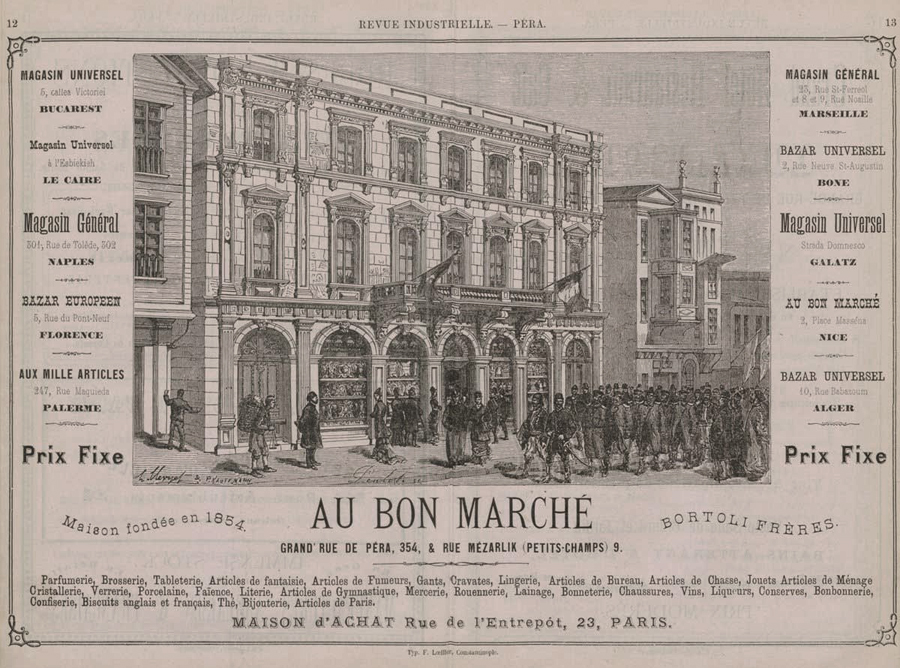
Ephemera
G&A Baker shop of Istanbul sample catalogue pages
George Baker, b. 1822 was an apprentice at Kew Gardens and later took employment under the Office of Works in Constantinople, in 1847 to landscape British Embassy gardens. He died in that city in 1905 and is buried in the Crimean War Cemetery at Scutari and memorial held in the Crimean Memorial Church Pera.
He was amongst the first landscape gardeners in Turkey and later became freelance as a general merchant and draper. Between 1854-1905 he headed G&A Baker (originally known as Baker and Edwards shop - the latter also of an Anglo-Levantine family), that eventually grew to one of the biggest trading firms in Middle East. He opened first departmental store as well as the first cold store and flour mill. He helped introduce to the Ottoman lands lawns and flowers such as wisteria still widely grown today. He was decorated by the Sultan with the Grand Cordon of Mejideh; Order of Iftikar. His Will dated 10 October 1892 declared for probate 3 July 1905 by the Supreme Consular Court, Constantinople, showing his amassed wealth: To Maria (wife) £500 per annum for life. Each son £5500 during lifetime. Each daughter £6000 during lifetime.
The G&A Baker retail store presence in various locations around the city went on till around 1952 so just shy of a century of trading in which it was often at the forefront of innnovation in terms of stock type with changing demographics of shoppers from a purely Levantine / upper echelon Ottoman society clientelle to one much more diverse in the republican era. It produced catalogues in different languages to cater for the needs and tastes of the truely multicultural customers it served and often created an element of need through the novelties it imported first and building up an envy these competing communities wished to show off in the rush to mirror Western trends down to the minutia of fashion. This catalogue was clearly designed for the new rising elite of Moslem Turks who could read Ottoman script, and wanted a share of Western luxuries openly displayed by Levantines and all the minorities in Constantinople in the period 1900-1920. In this period the chief advertisement language for virtually all businesses in this capital city would still have been in French. More information on the trading history, Baker family:
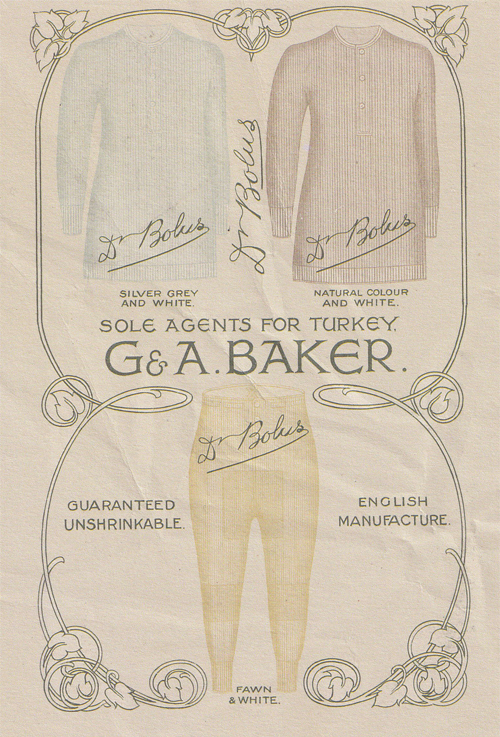

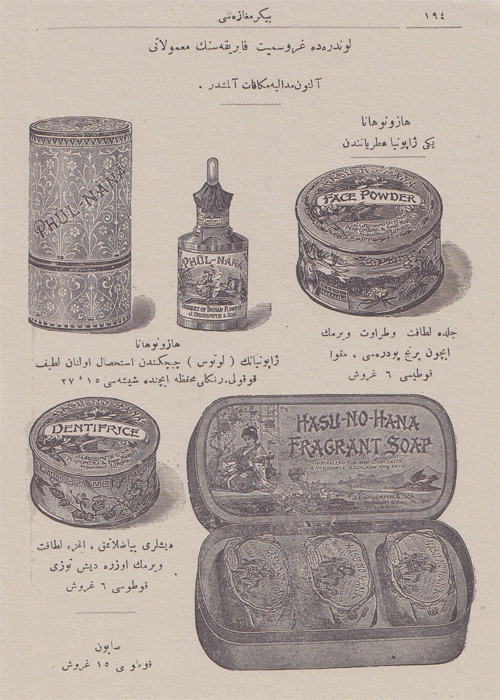
Range of cosmetics from the London based Grossmith company which had received a golden medal.
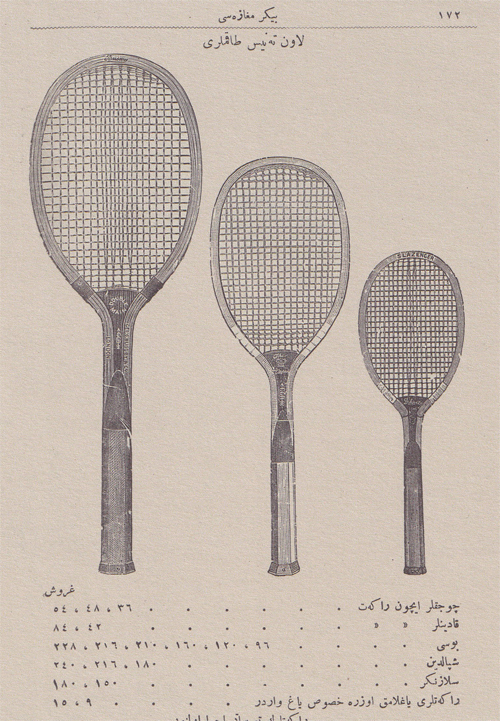
‘Lawn tennis sets’.
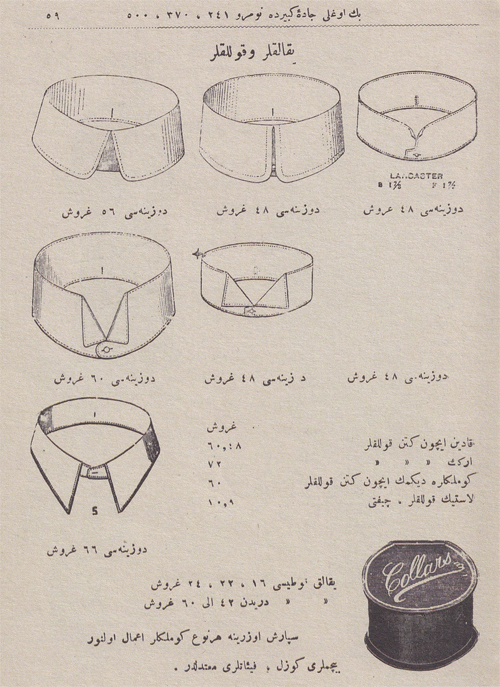
‘Collars and cuffs - custom shirts can be made upon request; they look good, and are reasonably priced’.
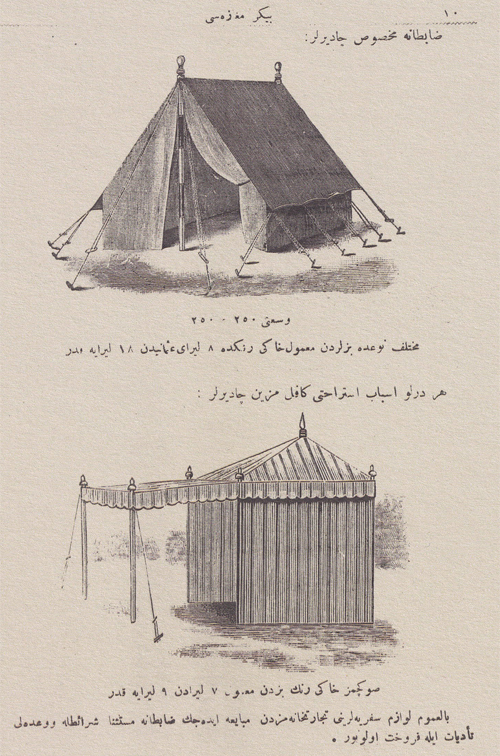
‘Tents for officers - ornamented tents that cover all the requirements for rest’.
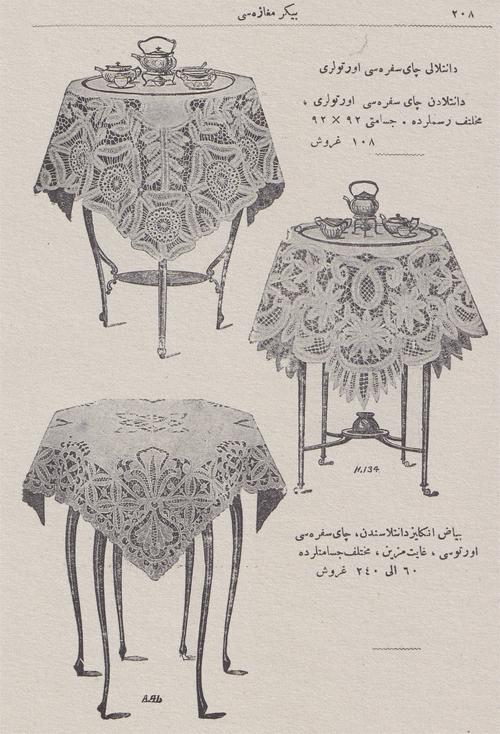
‘Tablecloth with laces for tea tables’.
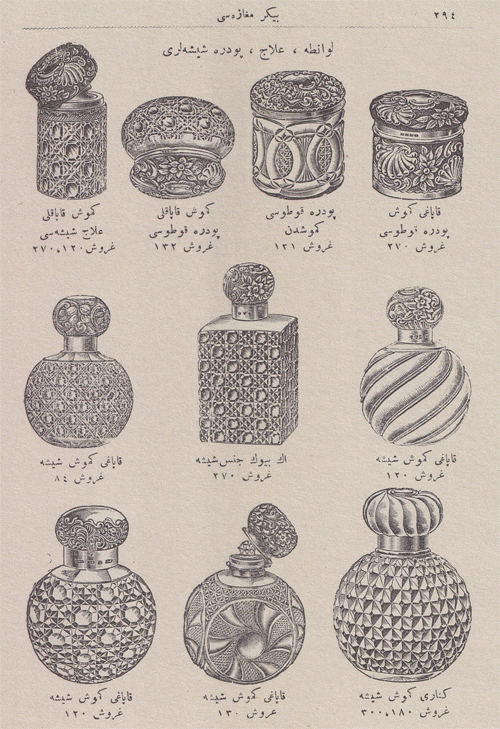
‘Bottles for lavender extract, medicines and powder’.
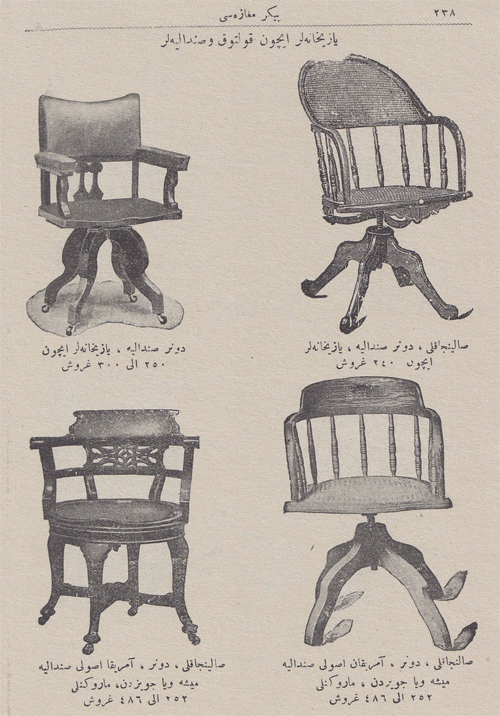
‘Bureau chairs’.
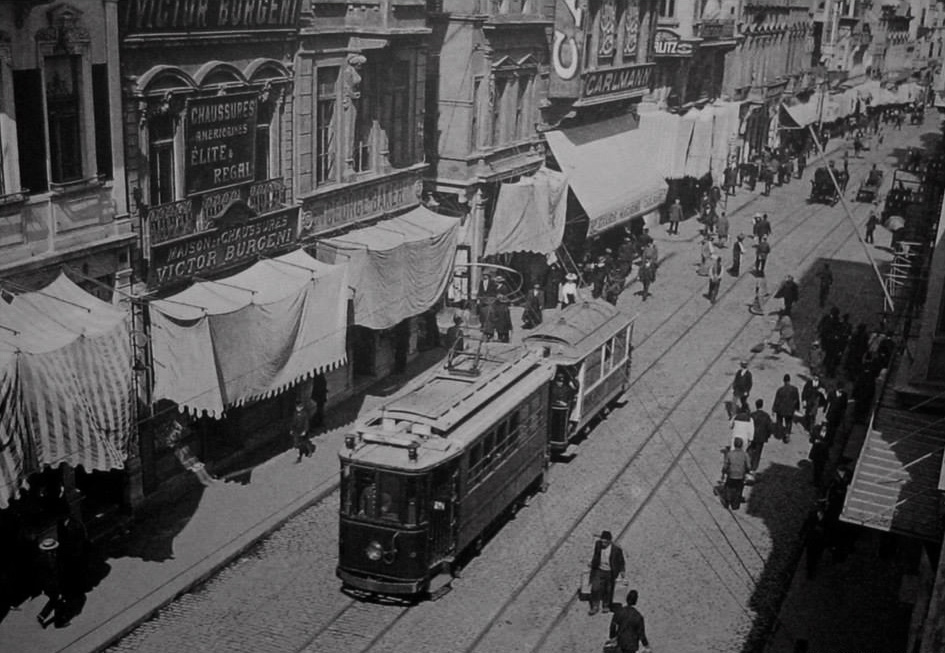
View of the main shopping through-fare in Constantinople during and post Ottoman times in Constantinople / Istanbul, formerly called Grand Rue de Pera showing one of the G Baker shops (name shows this was not a partnership like many others). The electric tramway system seen here dates this photo to post February 1914 and is likely to be pre-1920 from the Edwardian dress sense of the ladies. Image below shows the same shop-front area around the 1930-40s based on type of car parked and appears to show the Baker shop no longer there, including the decorative female sculpture on the facade.
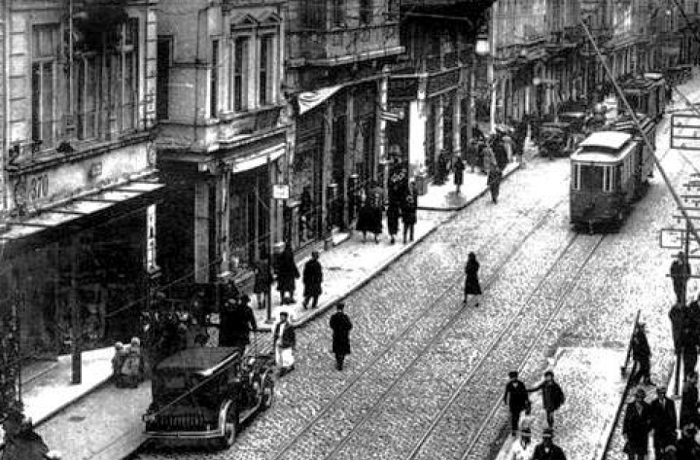
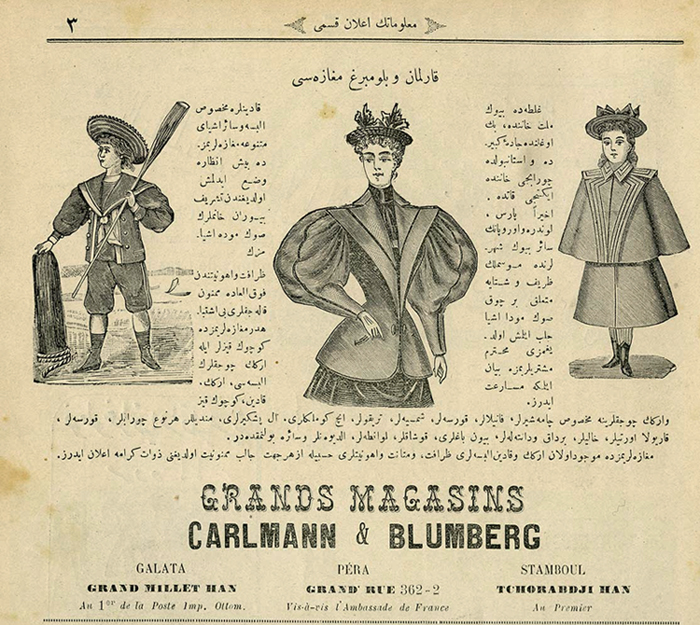
The later image doesn’t make it clear if the Carlmann shop was still in operation in this central section of ‘la Grande Rue de Pera’. The neighbouring shop to the Baker’s was Carlmann, run by a long-time resident Romanian Jew whose business was sequestrated by the state, like a lot of other minorities with the imposition of a massive ‘wealth tax’ during WWII (1942). The building stayed vacant for 25 years and later this whole section got pulled down and is now occupied by the Odakule business high-rise, built by the Istanbul Chamber of Commerce in 1976, totally out of character with the architecture of the neighbourhood.

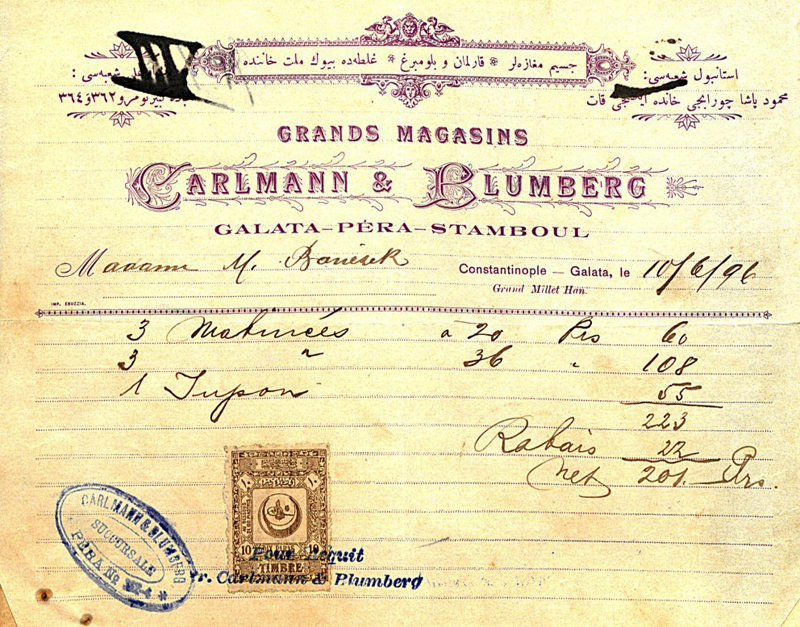
An advertisement and an invoince (1896) for this partnership that clearly went back to late 19th century with their first shop in Galata quarter.
Further information from registers in the Austrian Consular (k.u.k.) courts record that Heinrich Blumberg was an Austrian and Carl Carlmann a Romanian citizen and this partnership was registered in 1894 and in 1897 this concern was declared bankrupt with Blumberg’s assets transferred to Carlmann, announced in 1900. However it seems for ‘commercial reasons’, the trio of shop names continued showing this partnership in the promotional material, so Blumberg possibly continued having an active role in this business (images and information courtesy of Elmar Samsinger).
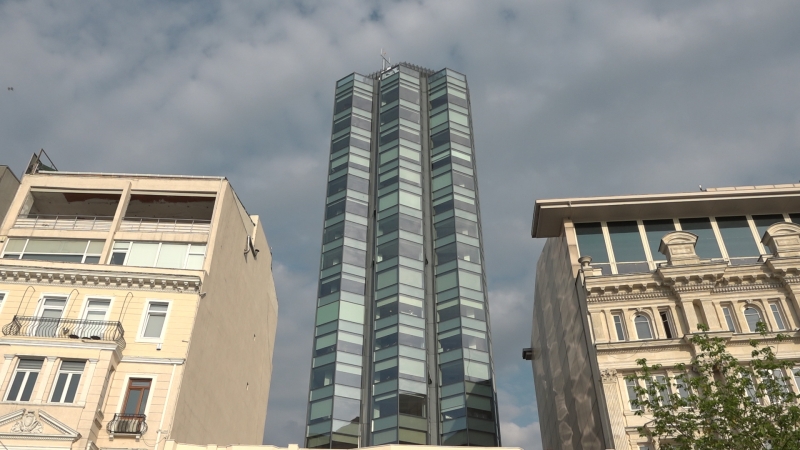
The Odakule tower in the middle with the former buildings on either side with later unsympathetic floor additions - view from the opposite facade.
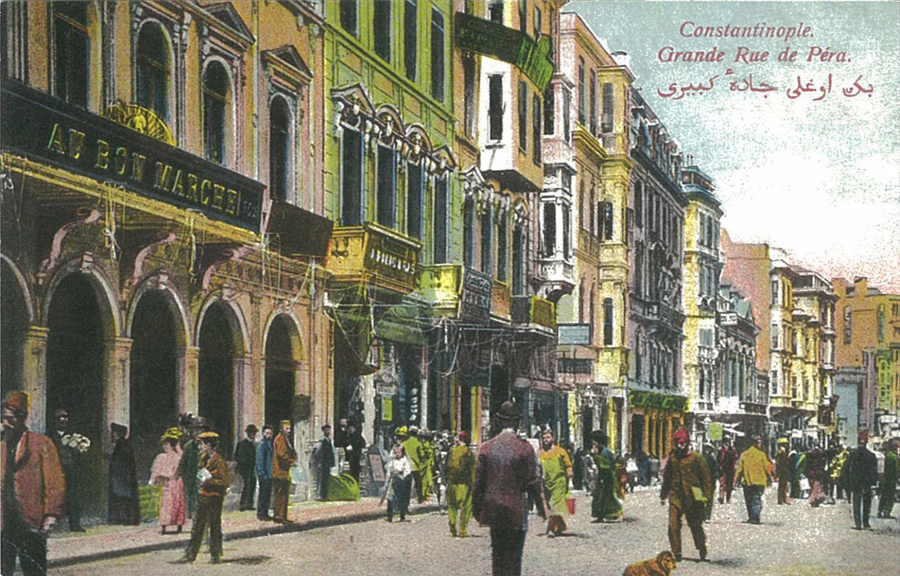
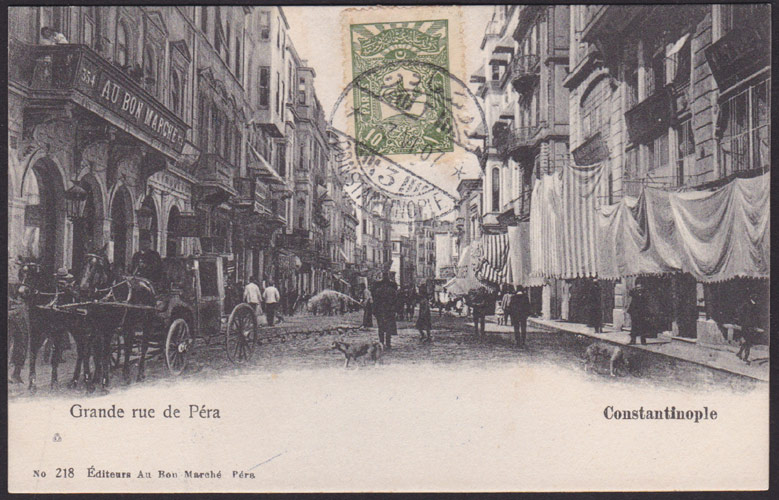
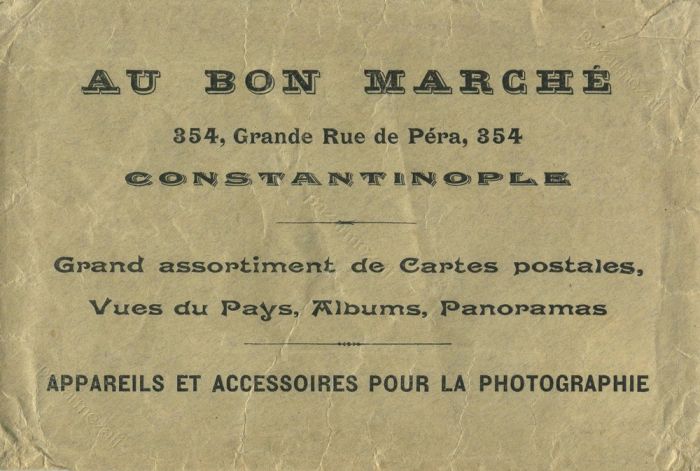
In the top archive photo on the right opposite horse-cart is visible the distinctive 7 mini pitched roof front decoration was the frontage of the famous for Au Bon Marché department store founded by the Italian Levantine Bartoli brothers occupied the ground floor of a neo-classical building established in 1869. Like many other buildings in Pera this building also appears to have dissapeared or changed beyond recognition. The Bon Marché was one of the first proper department stores in Pera but struggled in importing goods post WWI and in 1926 the Bartolis sold the business to their rivals the Carlmanns. The shop then reopened as Carlmann Bon Marché together with an expanded passage. This all came to a crashing end with the 1955 pogrom of 6-7 September epicentered on this street.
